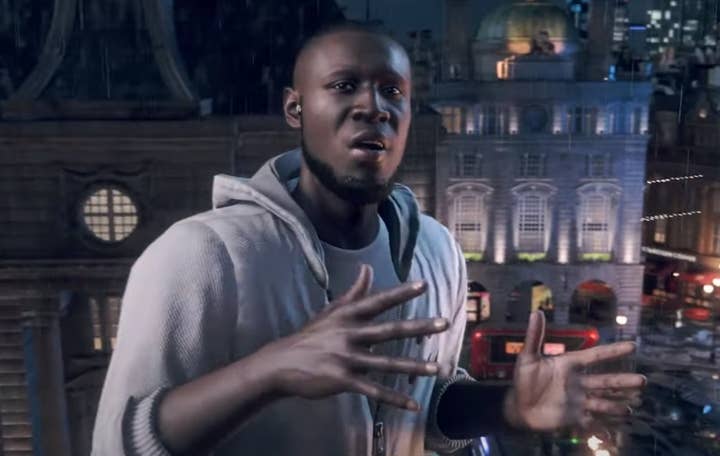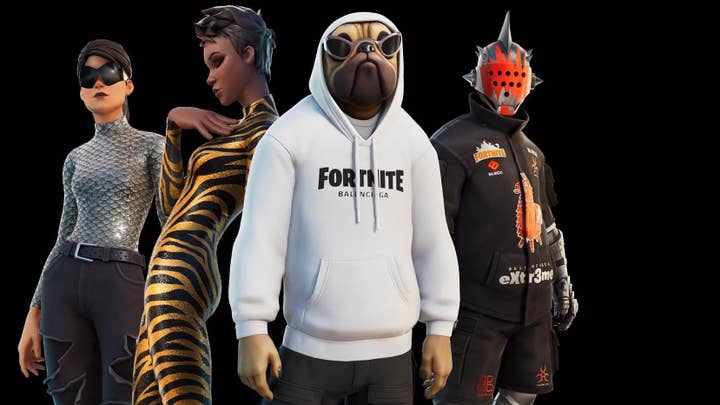Video games are the new battleground for big brands
A panel of experts discuss how everyone from high-end fashion labels to celebrities are collaborating more closely with video games
The relationships between brands and video games has evolved over the years. We've gone from the days of lemonade mascots starring in their own platforming titles to a point where premium fashion labels like Gucci are finding ways to integrate their brands into hugely popular titles like Roblox.
At last month's GI Live London, a panel of experts discussed this changing relationship and what the industry can expect in the future when it comes to working with brands. The conversation – hosted by Dawn Paine, co-founder and CEO of creative agency Aurora – began with thoughts as to why more and more companies are seeking to establish a presence in video games.
"It is utter madness that most of the brands aren't talking about the spaces that the vast majority of the population are in"
Jane Kinnaird, Meta
"A lot of the eyeballs that brands have traditionally reached through traditional types of media and channels are moving to games, they're moving to TikTok, they're on Twitch and Discord and all these other places," said UKIE CEO Jo Twist. "When I go to like a brand-led or advertising world conference, they don't talk about these spaces.
"We have more than three billion people who play games regularly. More than half of the UK population plays games regularly, the fastest growing demographic is actually women age 40 and over, we've got the whole of the Indian continent, the whole of the African nations, South and Latin America – all these unexplored audiences and potential reach for these incredible worlds."
Meta's creative strategist and entertainment lead Jane Kinnaird agreed, adding: "It is utter madness that most of the brands aren't talking about the spaces that the vast majority of the population are in. One of the main reasons that any kind of gaming platform or environment that people are spending time in is compelling, is people are there because it's where they're spending their enjoyment time. If as a brand I can associate myself with that joy, I'm building affinity and I'm building something far stronger than if I interrupt a TV show that no one's watching, which isn't really useful.
"If you can do it well as a brand and you can partner, you are becoming part of a universe that someone loves to be in, that someone WANTS to be in and expresses themselves freely in. And I think if you can be part of that self-expression and you can facilitate it, you're creating something that is of more value to a user.
"I think I've always said that any advertising – because that that's my background – should either be entertaining or useful. In a gaming environment, you can be both at the same time so it's mind-blowing."

Self-expression is certainly a key route for brands to get involved in video games, with more and more titles featuring extensive customisation options. Online multiplayer games in particular open themselves up to these sort of partnerships as players can customise their character with brands they like and identify, or that they believe give them status within the game's community – case in point, that Roblox Gucci handbag.
Kinguin business development officer David Yarnton likened Kinnaid's observation about linking brands to things that people enjoy to the long-running focus on advertising around sports and sponsorship of teams. He also added that the fact brands can more easily place their products directly into video games – more so than they could in the past – means it's easier for companies to have a presence in this space without directly developing new titles.
"The problem is a defined campaign that has a beginning and end sometimes and that's not what game worlds or the metaverse is about"
Jo Twist, UKIE
"20 years ago, people didn't understand it," he said. "There wasn't much opportunity necessarily for brands to get so involved, apart from sponsorship-type events or things like that. But as the technology developed and evolved, you started getting brands not just being involved as a sponsor, but getting into the games as well."
Kinnaid added that video games also offer more opportunities for celebrities to get involved, rather than just products: "I work predominantly with music labels and artists and film studios, so it would be remiss of me to not say any musician on Fortnite is doing an amazing thing. I mean it's not them, it's Fortnite that's doing it, but I do think it's been interesting to watch the evolution.
"Even if you just look at Marshmello, Travis Scott and then Ariana Grande, the amount of control that was given to Fortnite… I mean, you're giving the creative director of Ariana Grande kind of carte blanche to be her imagination. That wasn't just a performance in a space, that was being in her brain – or at least her creative director's brain.
"I have always been a little bit dubious of watching an artist perform in a space, because I don't think it's possible to replicate like a live performance, but to create something completely different, that isn't a live performance, that is actually gameplay or an immersive experience I think that's amazing."
She also cited other partnerships she thought were "beautifully aligned," such as Ubisoft's collaboration with British rapper Stormzy for Watch Dogs: Legion. In addition to adding his song 'Rainfall' to the game's soundtrack, and featuring its open world as the backdrop for the music video, the grime star actually cameos in one of the game's missions.

"[Watch Dogs is] about playing against the system, bucking trends, fighting against the establishment and he's kind of represented that, so the fact that he was then integrated into the gameplay, I think was really, really well done," said Kinnaird.
Twist, however, says there are still brands making mistakes in how they integrate with video games today, just as they did in the past.
"As technology evolved, you started getting brands not just being involved as a sponsor, but getting into the games as well"
David Yarnton, Kinguin
"I was a really heavy user of Second Life, and there's a lot we should be learning from how brands got it wrong," she said. "As soon as the brands entered Second Life, they messed it up and no one was interested because what they did wasn't imaginative. They weren't thinking about that kind of Ariana Grande being in her brain, that connection. They were in there for a hit and they just recreated what's on the High Streets. Who wants that? I can fly in these worlds – why can't we just have these incredible experiences, that connect to me and say something about the brand that I want to be part of?
"The problem is a defined campaign that has a beginning and end sometimes and that's not what game worlds or the metaverse is about. Game worlds are places that people want to hang out in, are about community and about loyalty to that space and what you're doing there. That's an ongoing thing, that's not a 'one-hit campaign done, we're out of here now'."
Yarnton agrees that some brands still approach games with a view to "flog stuff, rather than building up that relationship with the community," adding: "If someone comes in and doesn't talk the right language, doesn't do the right thing, you'll actually get negative feedback and you can actually damage yourself."
He continued: "The ones that have done it well are speaking the right language and they don't try and ram it down throats."
The expansion of games and the type of experiences they offer has also opened the doors for a wider variety of brands. While Fortnite is primarily a competitive game, the fact it has social spaces and ventures into more creative and entertainment-centric endeavours like its music concerts means it's a better fit for brands than, say, a military shooter. Similarly, Roblox's focus on user-generated content and allowing players to mix together in virtual worlds means that it's attracting brands that have historically had little to do with video games.
"If you look at the top 20 brands that have gone into the metaverse, most of them are fashion brands," said Yarnton. "It's really expensive ones – Gucci, Burberry, Nike – it's all the high end. Why are they there? Well, why are they in Regent Street? Why did Apple create stores when it’s a technology company? It's all about building these brand values, and they want to be in the places that people may look at aspiration and maybe they can aspire to these brands a little bit easier there.
"Games are good at looking after IP and that's basically what the brands are doing. It's all about their IP, their brand values, and I think games are the same situation you know, you get a good piece of IP in games, you look after it – you know, Dlala Games was talking about this stuff earlier. That was fantastic about the respect of franchises like Disney that have been around for 90 years and how they protect it."
Yarnton referred to a talk by Dlala's Aj Grand-Scrutton on how studios can convince IP holders to trust them with their most famous properties, as Disney did entrusting Dlala with Mickey Mouse for the upcoming Illusion Island game. You can read Grand-Scrutton's advice over on the GI Academy.

Yarnton also likened this to his years as head of Nintendo UK; he said the biggest thing the company protected was its IP, jokingly adding: "You do anything wrong with Mario we'll be around there with a sledgehammer."
The introduction of high-end fashion brands to gaming is the cause for debate. As far back as The Sims, retail brands such as H&M and Ikea have brought their catalogues to games as a collection of items but in the age of microtransactions, the price tags for individual digital products continues to vary greatly. Kinnaird, for one, does not believe brands have struck the right balance – yet.
"To a generation of 15-year-olds, [an in-game item] is real. There is no distinction and that is the future, whether we like it or not"
Jo Twist, UKIE
"There's some that seem to be pricing their skins or merch to the same level as the physical product, which is mind-boggling to me," she said. "If you're going to pay £6,000 for a handbag… I don't know who would do that myself, but if you're going to pay £6,000 for a handbag in real life, I'm going to use it, it's going to have longevity cost per use.
"In a game environment, I can't have the value the same attributed but and I do understand because I've got it forever and it's not going be damaged. I do think that it is really smart that if you are Balenciaga in Fortnite, you can sell a 12-year-old a skin for $12, and they're going 'I've had to pay for that so it has value and I can aspire to it, I'm going to save up some of my pocket money so that I can actually buy it.' And when they're 24, they are going to spend $600 on a pair of trainers."
Twist discouraged the use of worlds like 'real', 'digital' or 'virtual' when it comes to in-game products, adding: "To a generation of 15-year-olds and 10-year-olds now, it is real. There is no distinction and that is the future, whether we like it or not."
She added that brands are more likely to sell in-game products today if there is a functionality to it or, theorising about the future of the metaverse and so on, transferability.
"For a long time, I wanted that incredible red dress that I bought in Second Life, because I spent a ton of money in the game and I wanted it. But what was I going to use it for? I can't wear it, I can't take it anywhere. What am I going to do, put it in some sort of like Pinterest or something? It is about what do I use it for and I think it is that exchange, that monetisation."
You can watch the full panel in the video below.


